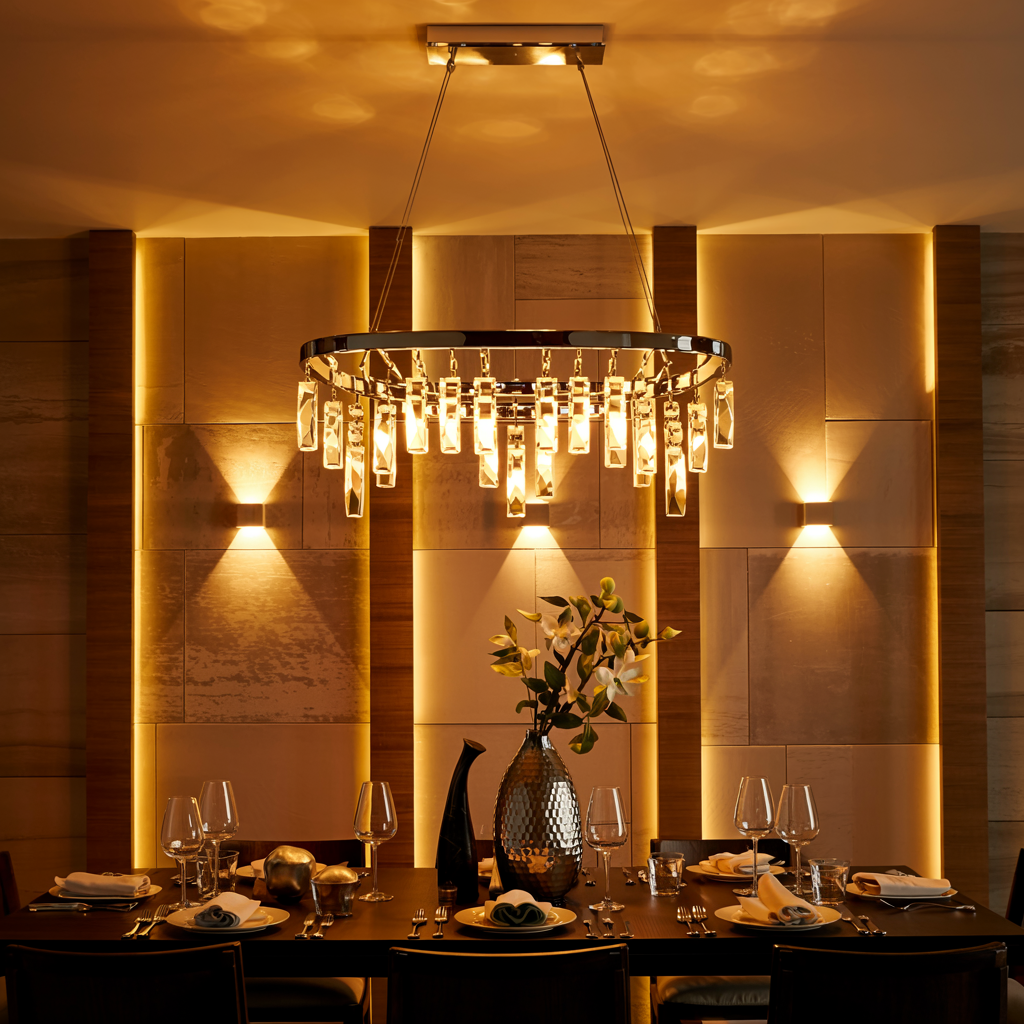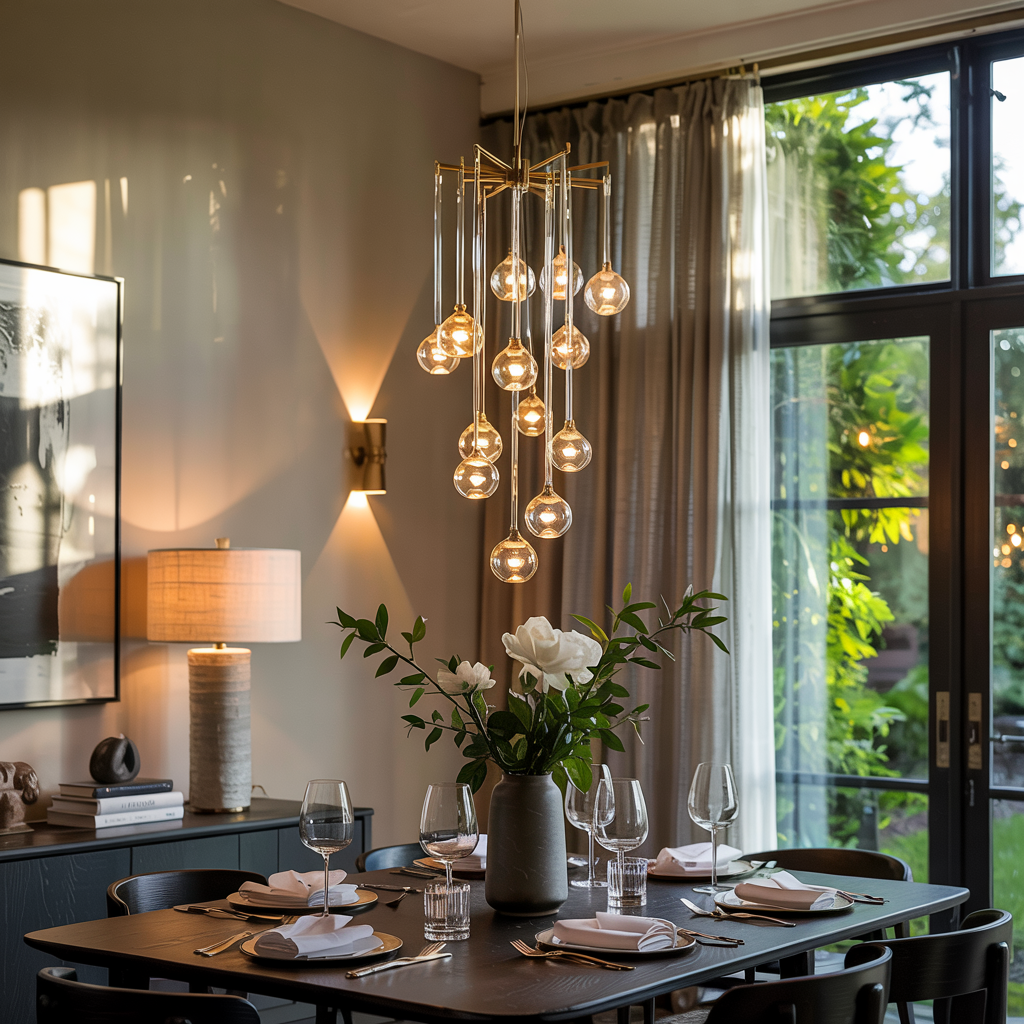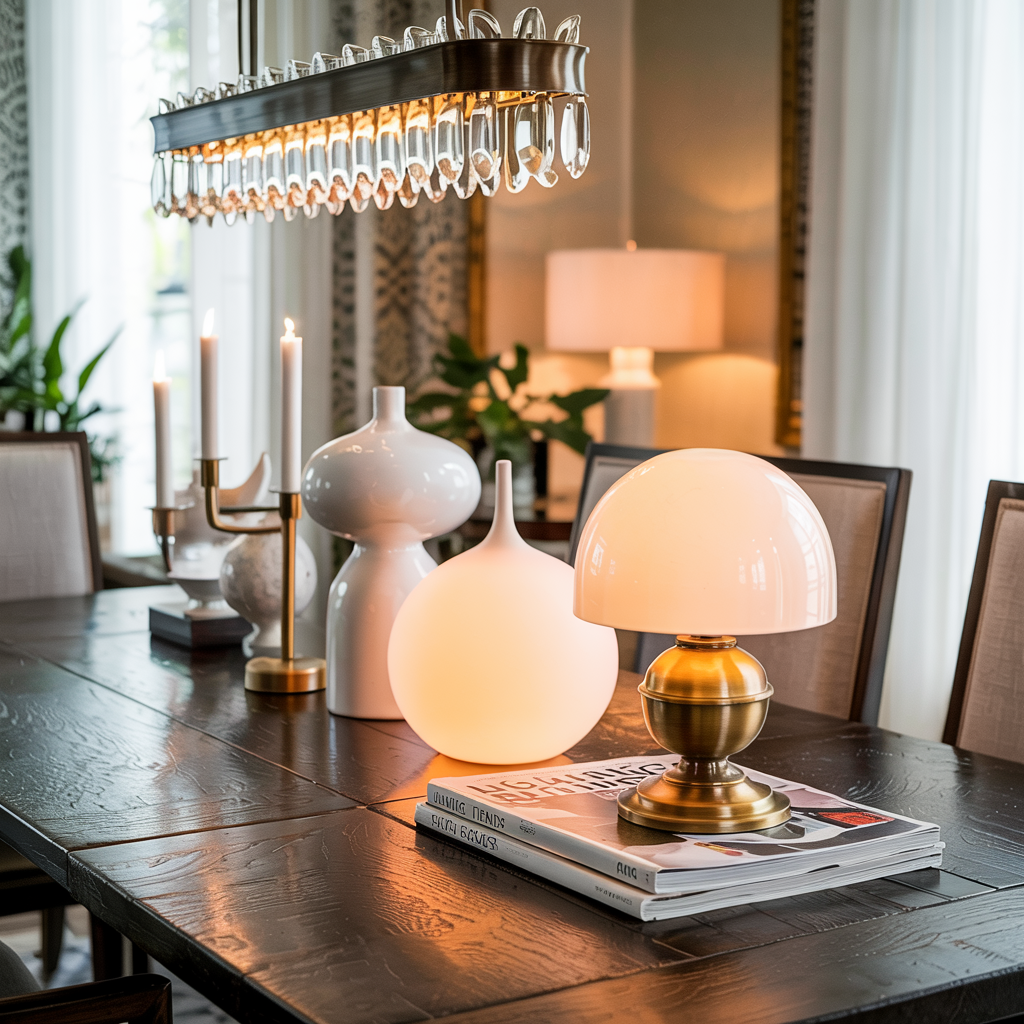How to Choose Dining Room Lighting? The Ultimate Guide To Choosing The Perfect Lighting
Creating the perfect ambiance in your dining room is crucial, and a key element in achieving this is choosing the right lighting. How to choose dining room lighting? This comprehensive guide will walk you through every aspect, from understanding different types of lighting to selecting the perfect fixture for your space and style. We’ll explore…
Creating the perfect ambiance in your dining room is crucial, and a key element in achieving this is choosing the right lighting. How to choose dining room lighting? This comprehensive guide will walk you through every aspect, from understanding different types of lighting to selecting the perfect fixture for your space and style. We’ll explore factors like light temperature, fixture style, placement, and even the impact of lighting on mood and functionality. Get ready to transform your dining room into a warm, inviting, and beautifully illuminated space!
Before diving into fixture styles, consider how you primarily use your dining room. Is it primarily for formal dinners, casual family meals, or a mix of both? The function will dictate the type of lighting best suited for the space. A formal
dining room might benefit from a statement chandelier, while a casual space might be better served by a combination of ambient and task lighting.
How to Choose Dining Room Lighting?
Choose dining room lighting based on table size, room shape, and ceiling height. Use a chandelier or pendant centered above the table. Match the fixture style with your decor. Ensure the light is warm and dimmable for flexibility. Keep it 30–36 inches above the tabletop for best effect.
Types of Dining Room Lighting

Ambient Lighting
Ambient lighting provides overall illumination for the room. Think of a chandelier, recessed lighting, or a ceiling fan with a light fixture. This sets the mood and general brightness level.
Task Lighting
Task lighting focuses light on specific areas for particular activities. In a dining room, this might be a pendant light above the dining table to illuminate the table surface for eating and conversation. This improves visibility during meals.
Accent Lighting
Accent lighting highlights architectural details or decorative elements. This could include wall sconces, picture lights, or even strategically placed floor lamps. This adds character and visual interest.
Read More: Maximize Natural Light: How to Bring More Light Into a Room?
Choosing the Right Fixture Style

Chandeliers
Chandeliers are a classic choice for dining rooms, offering a dramatic focal point and elegant ambiance. Consider the size of your dining room and the height of your ceiling when choosing a chandelier. A smaller chandelier might suit a smaller space, while a larger one can be the centerpiece of a spacious room.
Pendant Lights
Pendant lights offer a more modern and versatile option. They can be hung individually or in clusters, allowing for flexibility in design and illumination. Pendant lights are particularly suitable for dining tables, providing direct, focused light.
Flush Mount Ceiling Lights
Flush mount ceiling lights are a practical choice for rooms with lower ceilings, as they sit close to the surface. While they may not be as visually striking as chandeliers or pendants, they provide efficient, evenly distributed lighting.
Read More: 17 Brilliant Over Kitchen Sink Lighting Ideas to Brighten Up Your Space
Considering Light Temperature and Color Rendering Index (CRI)

Color Temperature
Color temperature is measured in Kelvin (K) and determines the “warmth” or “coolness” of the light. Lower Kelvin values (2700K-3000K) produce warm, yellowish light, ideal for creating a cozy and inviting atmosphere. Higher Kelvin values (5000K-6500K) produce cool, bluish light, often used in kitchens or bathrooms. For dining rooms, warm white (2700K-3000K) or soft white (3000K-3500K) are usually preferred.
Color Rendering Index (CRI)
CRI measures how accurately a light source renders the colors of objects. A higher CRI (80 or above) indicates more accurate color rendering, resulting in a more natural and vibrant appearance of food and decor. This is vital for ensuring your dining experience is visually appealing.
Understanding Lighting Layering
Combining Different Light Sources
Layering lighting involves using a combination of ambient, task, and accent lighting to create a well-lit and versatile space. This provides flexibility to adjust the lighting based on the mood and activity. You can dim ambient lighting for a romantic dinner and switch on task lighting to read the menu.
Dimmable Lighting
The Benefits of Dimming
Dimmable lighting allows you to adjust the brightness level to suit your needs. This adds versatility and enhances the overall ambiance of your dining room. Dimming can create a more intimate setting for romantic dinners or a brighter space for family gatherings.
Placement and Positioning of Fixtures
Strategic Fixture Placement
The placement of your lighting fixtures significantly impacts the effectiveness of the lighting in your dining room. For example, pendant lights should be hung at the appropriate height above the dining table – not too high or too low. Consider the size of the table and the number of seats when determining the best placement.
Factors Affecting Light Output
Bulb Wattage and Lumens
The wattage of a light bulb indicates its power consumption, while lumens measure its brightness. Higher lumen values mean brighter light. LED bulbs are energy-efficient and come in various lumen outputs. Always check the fixture’s maximum wattage rating before selecting bulbs.
Choosing the Right Bulb Type
LED, Incandescent, and Fluorescent Bulbs
Different bulb types have different characteristics in terms of energy efficiency, lifespan, and light quality. LED bulbs are energy-efficient and long-lasting. Incandescent bulbs offer warm light but are less energy-efficient. Fluorescent bulbs are relatively energy-efficient but can be less appealing in terms of light quality.
Budgeting for Your Dining Room Lighting
Cost Considerations
Dining room lighting costs vary depending on the type of fixture, bulb type, and additional features. Set a realistic budget before beginning your shopping to avoid overspending. Consider the long-term costs, such as energy consumption, when comparing options.
DIY vs. Professional Installation
Assessing Your Skills
Installing certain types of lighting fixtures, like chandeliers or complex track lighting, might require professional expertise. If you lack experience, it’s best to hire a qualified electrician to ensure safe and proper installation. For simpler fixtures, like flush mounts or some pendant lights, DIY installation might be feasible, but always prioritize safety.
Maintenance and Cleaning
Maintaining Your Dining Room Lighting
Regular maintenance and cleaning are essential to keep your dining room lighting in top condition. Dusting light fixtures and replacing bulbs as needed will maintain the optimal brightness and appearance of the lighting. Follow the manufacturer’s instructions for cleaning your specific fixtures.
Style and Design Considerations
Matching Your Dining Room’s Decor
Choose lighting fixtures that complement your dining room’s overall style and decor. A modern chandelier might be inappropriate for a traditional dining room, and vice-versa. Consider the colors, materials, and shapes of your existing furniture and decor when making your selection.
Smart Lighting Options
Smart Bulbs and Control Systems
Smart lighting offers additional control and convenience. Smart bulbs can be dimmed, changed in color temperature, and even automated using a smartphone app or voice control. This level of customization enhances both the functionality and the aesthetic appeal of your lighting.
Frequently Asked Questions
What is the ideal height for a dining room chandelier?
The ideal height for a dining room chandelier is generally 30-36 inches above the table surface. However, this can vary depending on the height of your ceilings and the size of the chandelier. You want enough clearance to prevent accidental bumping but also to ensure the light effectively illuminates the table.
How many light sources should I use in my dining room?
The number of light sources depends on the size of your dining room and the level of illumination you desire. Layering light sources – ambient, task, and accent – is generally recommended. A smaller dining room might require fewer fixtures than a larger one.
Can I install dining room lighting myself?
The feasibility of DIY installation depends on the type of lighting fixture and your level of experience. Simple fixtures may be easy to install, but more complex ones, such as chandeliers or recessed lighting, require electrical expertise and should be installed by a qualified professional to avoid electrical hazards.
Final Thoughts
Choosing the right dining room lighting is a crucial step in creating a functional and aesthetically pleasing space. By carefully considering the different types of lighting, fixture styles, light temperature, and overall design, you can transform your dining room into a warm, inviting, and beautifully illuminated area. Remember to prioritize safety when installing lighting fixtures, and don’t hesitate to seek professional help if needed. With the right lighting, your dining room will become the heart of your home, a place for cherished memories and delicious meals shared with loved ones. Now go forth and illuminate!

